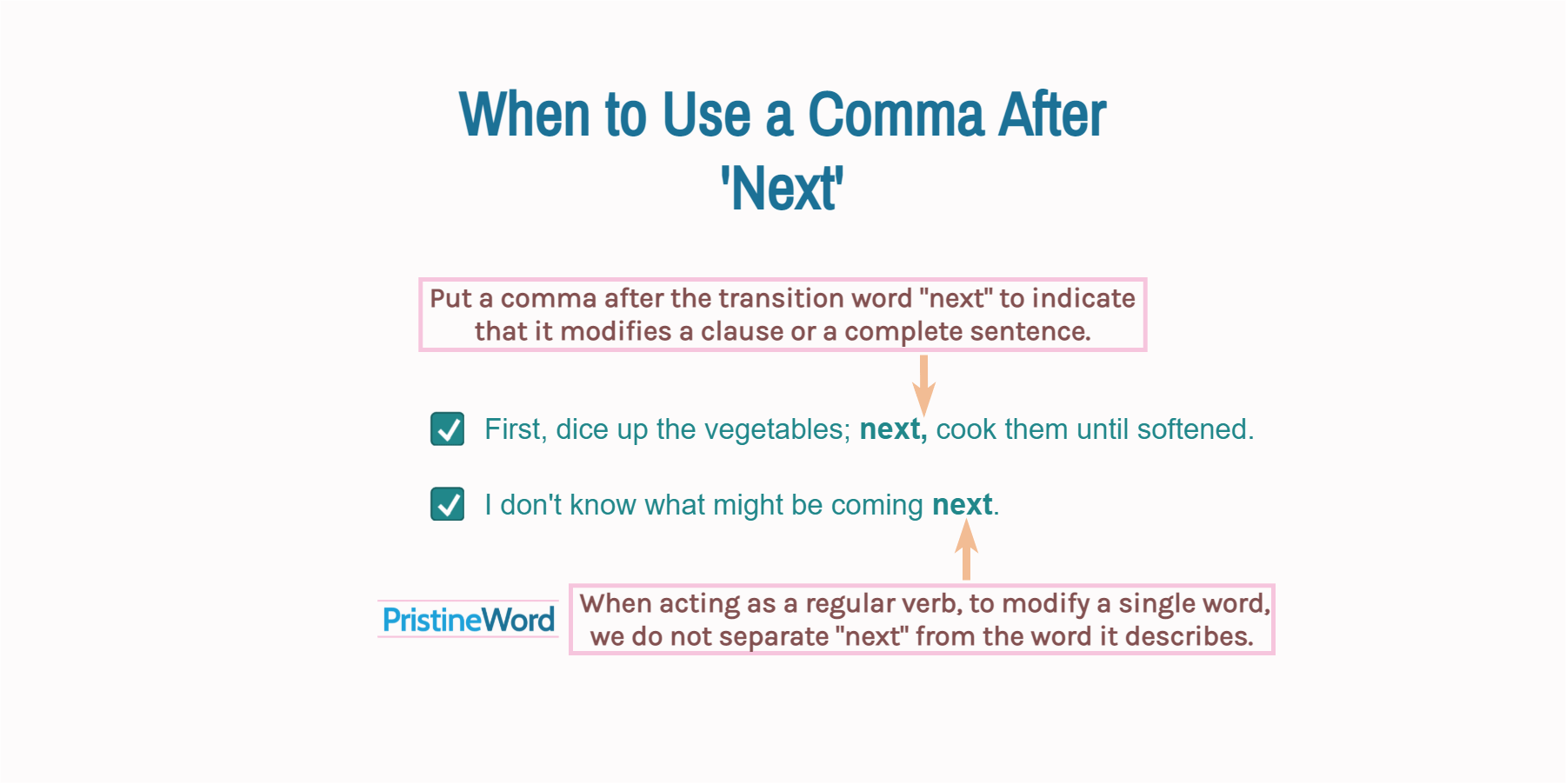Put a comma after the transition word "next" to indicate that it modifies a clause or a sentence, to give directions, or signal the order of steps.
Put a comma after the transition word "next" to indicate that it modifies a clause or a sentence, to give directions, or signal the order of steps.
First, dice up the vegetables; next, cook them until softened.
First, dice up the vegetables; next cook them until softened.
When functioning as a regular adverb, which modifies a single word, we do not separate "next" from the word it describes.
I don't know what might be coming next.
I don't know what might be coming, next.
Contents
1. How to Use 'Next' in a Sentence
"Next" can serve as:
- a conjunctive adverb to join two independent clauses—or connect two ideas in general (e.g., "We'll have lunch; next, we'll go to the park.")
- a regular adverb to modify a verb, adjective, or adverb (e.g., "She doesn't know what to do next.")
- an adjective to describe a noun or a pronoun (e.g., "I'll take the next bus.")
- a pronoun to replace a noun or a noun phrase (e.g., "He predicted that the US economy would grow this year and next.")
2. Punctuation of the Adverb 'Next'
At the start of a sentence or an independent clause, add a comma after a conjunctive adverb, like "next", to describe the whole sentence or clause that follows.
We visited Bangkok; next, we explored Northern Thailand.
As a sequence word, we often use "next" to give directions or signal the order of steps. When we write sequence words, such as first, second, next, or finally, we put a comma after them.
First, heat oil or melt butter; second, crack an egg; next, add it to the pan.
Conjunctive adverbs can also be placed in the middle or at the end of a sentence. In this situation, you can optionally place "next" between commas to signal a strong interruption, avoid confusion, or make clearer that "next" modifies not just a single word but a complete sentence or clause.
We went to Paris, next, to visit the Eiffel Tower and the Louvre Museum.
3. 'Next' as a Regular Adverb
Instead of describing a sentence or clause, we can use "next" to modify a single word (verb, adjective, adverbs).
You should know what happens next.
The example above shows that "next" modifies a single word ("happens"). We do not separate regular adverbs from the single word they describe.
We need to decide what to do next.
Let me know where to go next.
Recommended: When to use commas with adverbs of time and frequency

